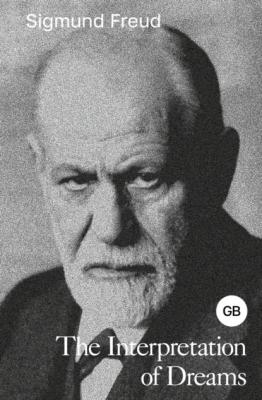Примечания
1
To the first publication of this book, 1900.
2
Compare, on the other hand, O. Gruppe, Griechische Mythologie und Religionsgeschichte, p. 390. “Dreams were divided into two classes; the first were influenced only by the present (or past), and were unimportant for the future: they embraced the ένύπνια, insomnia, which immediately produces the given idea or its opposite, e. g. hunger or its satiation, and the φαντάσµατα, which elaborates the given idea phantastically, as e. g. the nightmare, ephialtes. The second class was, on the other hand, determinant for the future. To this belong: (1) direct prophecies received in the dream (χρηματωμδς, oraculum); (2) the foretelling of a future event (ὅραμα); (3) the symbolic or the dream requiring interpretation (ὅνειρος, somnium). This theory has been preserved for many centuries”.
3
From subsequent experience I am able to state that it is not at all rare to find in dreams repetitions of harmless or unimportant occupations of the waking state, such as packing trunks, preparing food, work in the kitchen, etc., but in such dreams the dreamer himself emphasizes not the character but the reality of the memory, “I have really done all this in the day time."
4
Chauffeurs were bands of robbers in the Vendée who resorted to this form of torture.
5
Gigantic persons in a dream justify the assumption that it deals with a scene from the dreamer̕s childhood.
6
The first volume of this Norwegian author, containing a complete description of dreams, has recently appeared in German. See Index of Literature, No. 74 a.
7
Periodically recurrent dreams have been observed repeatedly. Cf. the collection of Chabaneix.11
8
Silberer has shown by nice examples how in the state of sleepiness even abstract thoughts may be changed into illustrative plastic pictures which express the same thing (Jahrbuch von Bleuler-Freud, vol. I. 1900).
9
Haffner32 made an attempt similar to Delbœuf̕s to explain the dream activity on the basis of an alteration which must result in an introduction of an abnormal condition in the otherwise correct function of the intact psychic apparatus, but he described this condition in somewhat different words. He states that the first distinguishing mark of the dream is the absence of time and space, i. e. the emancipation of the presentation from the position in the order of time and space which is common to the individual. Allied to this is the second fundamental character of the dream, the mistaking of the hallucinations, imaginations, and phantasy-combinations for objective perceptions. The sum total of the higher psychic forces, especially formation of ideas, judgment, and argumentation on the one hand, and the free self-determination on the other hand, connect themselves with the sensory phantasy pictures and at all times have them as a substratum. These activities too, therefore, participate in the irregularity of the dream presentation. We say they participate, for our faculties of judgment and will power are in themselves in no way altered during sleep. In reference to activity, we are just as keen and just as free as in the waking state. A man cannot act contrary to the laws of thought, even in the dream, i. e. he is unable to harmonise with that which represents itself as contrary to him, etc.; he can only desire in the dream that which he presents to himself as good (sub ratione boni). But in this application of the laws of thinking and willing the human mind is led astray in the dream through mistaking one presentation for another. It thus happens that we form and commit in the dream the greatest contradictions, while, on the other hand, we display the keenest judgments and the most consequential chains of reasoning, and can make the most virtuous and sacred resolutions. Lack of orientation is the whole secret of the flight by which our phantasy moves in the dream, and lack of critical reflection and mutual understanding with others is the main source of the reckless extravagances of our judgments, hopes, and wishes in the dream” (p. 18).
10
Cf. Haffner 32 and Spitta 64.
 the superior activities which, even on sober comparison, one is tempted to ascribe to the dream life, memory is the most striking; we have fully discussed the frequent experiences which prove this fact. Another superiority of the dream life, frequently extolled by the old authors, viz. that it can regard itself supreme in reference to distance of time and space, can be readily recognised as an illusion. This superiority, as observed by Hildebrandt,35
the superior activities which, even on sober comparison, one is tempted to ascribe to the dream life, memory is the most striking; we have fully discussed the frequent experiences which prove this fact. Another superiority of the dream life, frequently extolled by the old authors, viz. that it can regard itself supreme in reference to distance of time and space, can be readily recognised as an illusion. This superiority, as observed by Hildebrandt,35